In the Oltrarno of Florence, upstream from the Ponte alle Grazie, is a small jewel of a museum that is open free to the public. The Museo Casa Siviero is located at the ground floor of the fine 19th century building on the banks of the river Arno, where the sophisticated collector and wartime “James Bond of Art”, Rodolfo Siviero lived from 1944 until his death in 1983. He left his home and its contents to the Region of Tuscany.
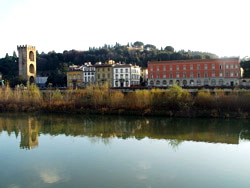
Siviero played a very important role in protecting Italy’s cultural heritage. Thanks to his efforts, most of the works the Germans wanted to take from Italy during the Second World War were either hidden away or found and returned.
Poet and Collector
Born in the Province of Pisa in 1911, Silviero’s family moved to Florence in 1924. It was here that Rodolfo received his education, frequenting the city’s artistic and literary circles and cultivating his ambition to become a poet and art critic.
A keen collector and refined intellectual, Siviero managed to collect many works of ancient art among which Etruscan findings; ancient Roman busts; 14th and 15th century wooden statues; Medieval paintings on gold backgrounds, Renaissance and Baroque pictures, bronzes, terra-cottas, liturgical objects, beautiful furniture. He befriended a group of important Italian modern artists such as Giorgio De Chirico, Giacomo Manzù, Ardengo Soffici, and Pietro Annigoni, and collected their works.
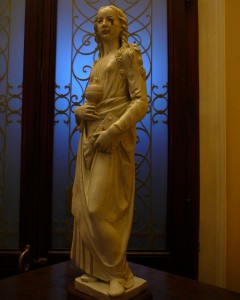
Saving Florentine Masterpieces
During WWII, with the German occupation following the armistice on September 8, 1943, a special military corps, the Kunstschutz, was initiated by Hermann Goering, Hitler’s Reich Marshall. The Kunstschutz, under the pretext of saving Italian works of art from the bombings, requisitioned them and transported them to Germany. Siviero, already working with Florentine partisans, sought to thwart the flow of art out of Florence and Tuscany
The most important work of art saved by Siviero during the German occupation is Fra Angelico’s Annunciation. The painting was originally kept in the Franciscan monastery of Montecarlo near San Giovanni Valdarno. In early 1944, Siviero heard that Goering wanted the masterpiece for his own collection and that the Kunstschutz had been ordered to take the painting to Germany. Siviero turned to two Franciscan friars in Florence and the masterpiece was removed and hidden the day before the Germans arrived. (The painting is now in the Museo della Basilica di Santa Maria delle Grazie in San Giovanni Valdarno.)
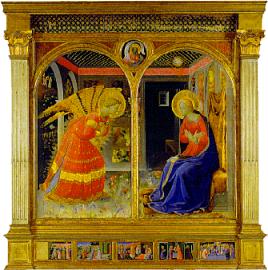
After the war, having succeeded in obtaining the return nearly all the works of Italian art found in a deposit in Munich, Siviero turned his attention to the hunt for missing masterpieces and works, which were stolen or illegally exported from Italy to collectors and museums throughout the world. Siviero continued his work until his death, but over the years the role of the delegation for the return of works of art began to loose importance. In his last years, Siviero expressed bitterness about the scant attention paid by Italian government to the problem of recovering the country’s cultural heritage.
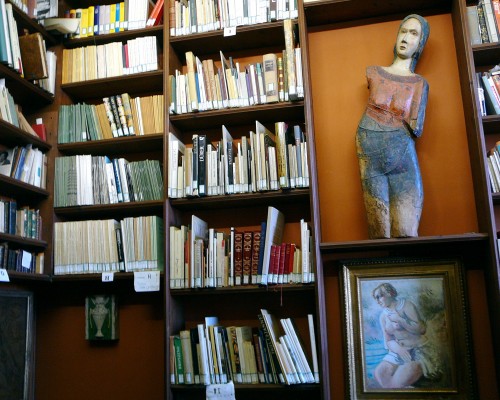
The Museum
Museo Casa Siviero is located on the corner between Lungarno Serristori and Piazza Poggi, at the foot of the steps leading to Piazzale Michelangelo. Its Neo-Renaissance architectural style, is typical of Giuseppe Poggi, the architect who was responsible for the urban redevelopment of Florence at the time when the city was Italy’s capital, and who was probably involved in the design of the house. The ground floor was Siviero’s home. His sister and parents lived in an apartment on the second floor. The museum occupies only the first floor, but there are plans to restore and include the second floor in the future.
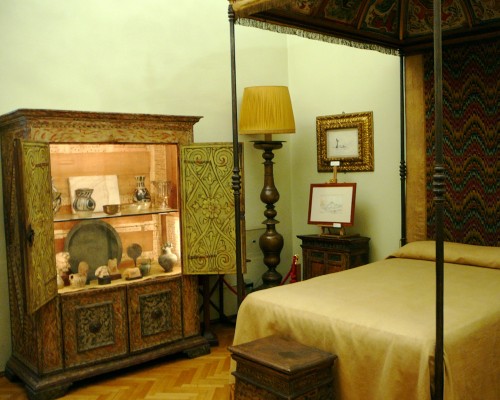
Rodolfo’s small library is one of the most interesting rooms with its made-to-measure bookshelves climbing to the ceiling around a modern-looking 14th century wooden Madonna. The dining-room’s frescoed ceiling vies with the guest-room’s canopied bed for the honor of most ornate decoration.
Italian web sites are not known for their clarity or appearance. The site for the Museo Casa Siviero is a pleasant surprise, providing an attractive, information-packed site. It is in English, with video tours of the rooms, a full online catalogue of the museums artistic contents, histories of Siviero and his house, and even a game for students to play.
More Information
Address:
Lungarno Serristori, 1-3; enter through the garden.
Opening Hours:
Saturday, 10.00 am – 6.00 pm (from October to May); 10.00 am-2.00 pm and 3.00 pm-7.00 pm (from June to September); Sunday and Monday 10.00 am -1.00 pm (all year round).
Cost:
Entry is free of charge.
